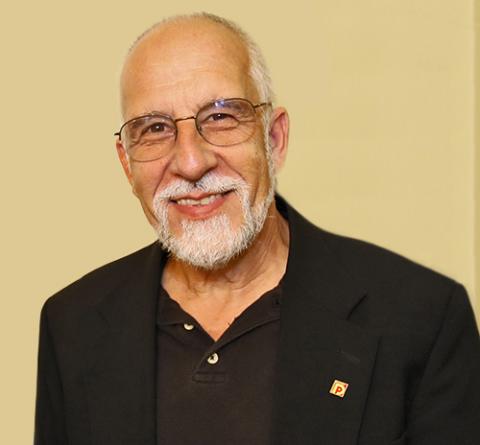Dr. Karl Hasenstein is leading an experiment that will unfold inside the International Space Station.
The biology professor is exploring ways plants sense and react to gravity by studying how directional forces affect their growth in a nearly weightless environment.
The project will be launched aboard an unmanned Falcon 9 rocket as part of NASA’s Space X-3 resupply mission. Lift-off has been scheduled for 4:41 a.m. on Sunday, March 16, from Cape Canaveral Air Force Station in Florida.
The objective of the research is to learn more about how and why plants grow up, while their roots grow down.
There are several prevailing theories. One involves starch grains inside plants, called amyloplasts. The tiny grains slowly settle in the direction of gravity and are thought to provide growth signals.
‚ÄúWe don‚Äôt know what kind of movement these particles undergo without gravity, without effective gravity,‚ÄĚ Hasenstein said.
The experiment will attempt to displace the starch grains in Brassica rapa plants; the turnip is a subspecies. The plants will be encapsulated in a semi-autonomous device and exposed to powerful magnetic fields.
The plant will curve away from the magnetic pressure if displacement of the plant root is the gravity-sensing trigger.
‚ÄúIf we determine it‚Äôs not sensitive to the displacement, we know we don‚Äôt have to go that way. We can look at something else,‚ÄĚ Hasenstein explained.

The experiment also will analyze the effect of the magnetic pressure on plant cell membranes and potential gene expression changes.
‚ÄúThe work is important not just for plants, it‚Äôs important for everything to understand what small effects gravity has on individual cells,‚ÄĚ Hasenstein said.
Hasenstein will be able to monitor growth via a live stream of images during the several weeks the project is in space.
Once the experiment returns to Earth in mid-April, an estimated six to eight months of research will follow.
The project is deeply personal for Hasenstein. He led a similar experiment that was aboard the Space Shuttle Columbia. He lost much more than his work when the shuttle broke up in 2003 reentering the Earth’s atmosphere.
Through his work, he had become friends with the astronauts who perished that day. So, Sunday’s flight will be an especially emotional one for him.
‚ÄúSome things stay with you always,‚ÄĚ he said.
To learn more, visit: and
